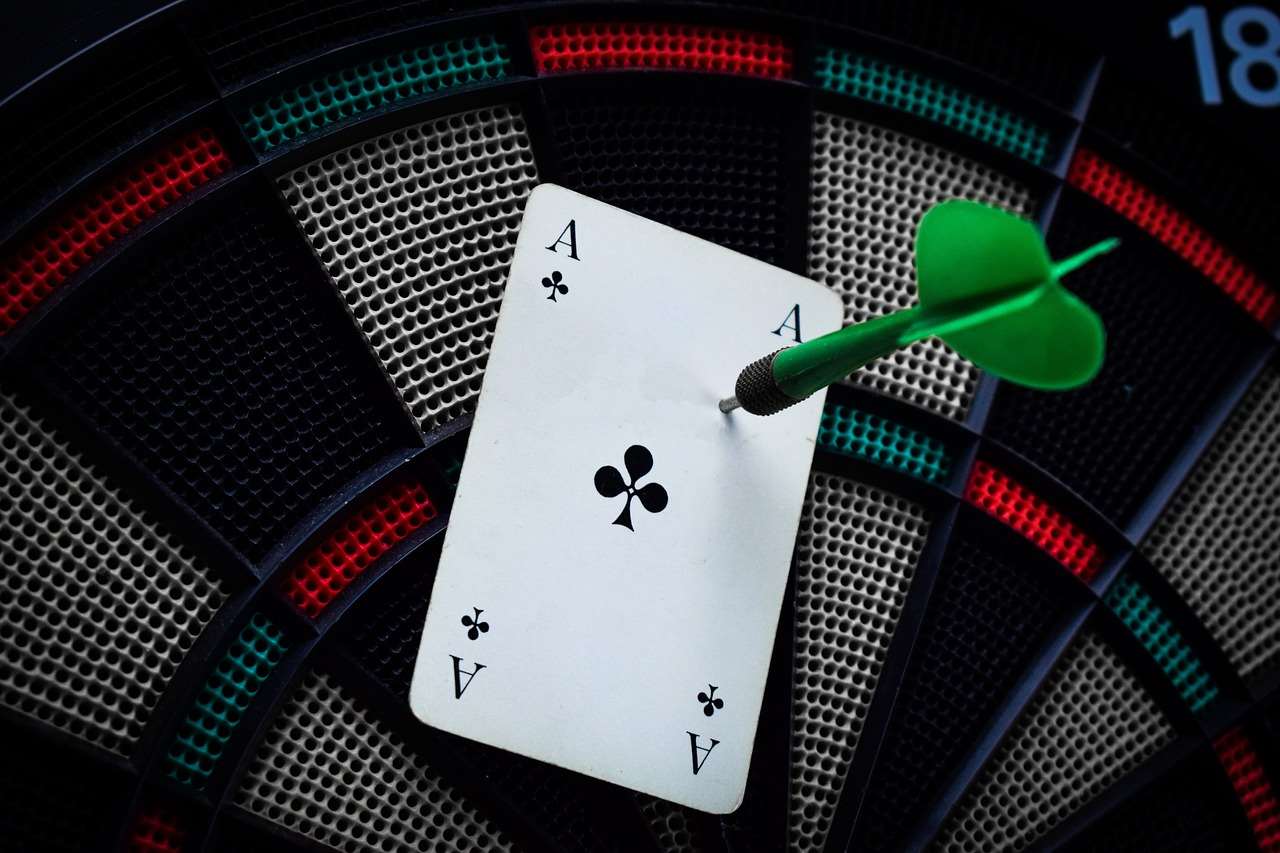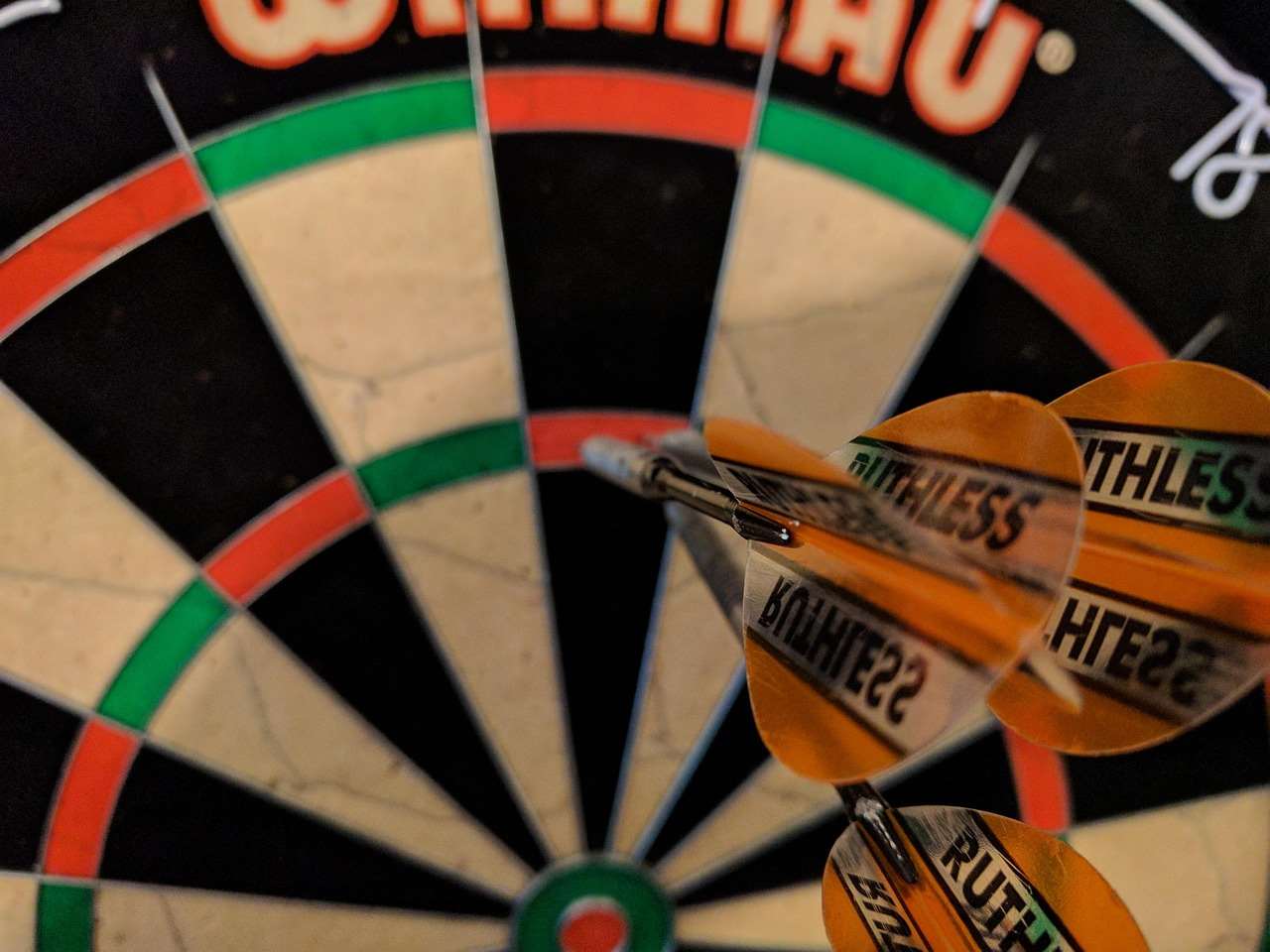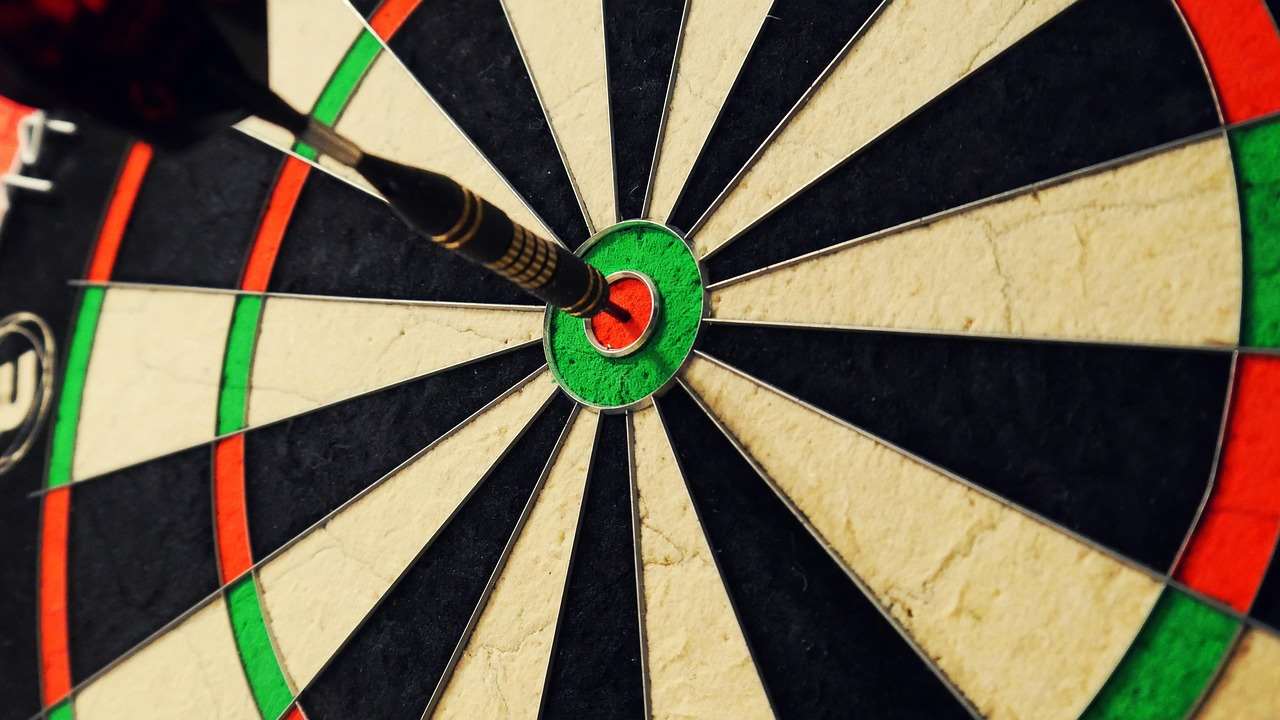The number next to darts players name typically represents their official ranking, a key indicator of their performance and standing within a professional darts organization. This article will delve into the meaning and significance of these rankings, exploring how they’re calculated and their impact on a player’s career. You’ll also learn about the major darts ranking systems and how they influence tournament seedings and qualification.
⚠️ Still Using Pen & Paper (or a Chalkboard)?! ⚠️
Step into the future! The Dart Counter App handles all the scoring, suggests checkouts, and tracks your stats automatically. It's easier than you think!
Try the Smart Dart Counter App FREE!Ready for an upgrade? Click above!
Understanding the Significance of the Number Next to Darts Players Name
When you watch professional darts, you’ll often see a number next to darts players name. This isn’t just a random identifier; it’s usually their ranking in a specific organization, most commonly the Professional Darts Corporation (PDC). This ranking is a crucial metric, reflecting a player’s recent performance and influencing their opportunities within the sport.
Essentially, the higher the number, the lower the ranking. A player ranked #1 is considered the best in that system. This ranking determines various aspects of a darts professional’s career, including:
- Tournament Seedings: Higher-ranked players are seeded in tournaments, giving them a more favorable path to the later stages.
- Qualification for Major Events: Many major tournaments have qualification criteria based on ranking, ensuring that the top players participate.
- Sponsorship Opportunities: A high ranking can significantly boost a player’s profile, attracting sponsors and endorsement deals.
- Prestige and Recognition: A good ranking enhances a player’s reputation and standing among peers and fans.
Understanding the ranking system adds another layer of depth to watching darts. It allows you to appreciate the stakes for each player and understand the implications of every match. It also highlights the skill and dedication required to climb the ranks in this competitive sport.

The PDC Order of Merit: A Detailed Look
The most prominent ranking system in professional darts is the PDC Order of Merit. This system ranks players based on prize money earned over a rolling two-year period. This means that a player’s ranking is constantly evolving as they win (or fail to win) prize money at tournaments.
Here’s a breakdown of how the PDC Order of Merit works:
- Rolling Two-Year Period: Only prize money earned within the past two years counts towards a player’s ranking. As older prize money drops off, players must continue to perform well to maintain or improve their position.
- Prize Money Driven: The more prize money a player wins, the higher their ranking. Winning major tournaments is the most effective way to climb the rankings.
- Transparency: The PDC publishes the Order of Merit regularly, making it easy for fans to track player rankings and understand the system. You can often view live updated rankings during major tournaments, adding another layer of excitement for fans and bettors alike.
The Order of Merit is vital because it determines qualification for many prestigious PDC events, including the World Matchplay, World Grand Prix, and the Grand Slam of Darts. The top players in the Order of Merit are guaranteed spots in these tournaments, while those lower down must fight for qualification through other avenues, such as qualifying events.
Understanding the **prize money structure** of various tournaments is also key. For example, winning the World Darts Championship provides a significant boost to a player’s ranking, while a first-round loss has little impact. This emphasizes the importance of performing well in the biggest events.
For those interested in tracking performances and potentially dart online spielen, understanding the Order of Merit offers valuable insight.
Other Important Darts Ranking Systems
While the PDC Order of Merit is the most well-known, other ranking systems exist in the world of darts. These systems may be used by different organizations or for specific purposes. It’s important to be aware of these alternative systems to get a complete picture of a player’s overall standing in the sport.
Some notable examples include:
- PDC ProTour Order of Merit: This ranking is based on prize money earned on the PDC ProTour, a series of events that provide opportunities for players to earn ranking points and qualify for major tournaments. This is often viewed as a “second tier” ranking system within the PDC.
- Challenge Tour Order of Merit: Aimed at up-and-coming players, the Challenge Tour offers a pathway to the ProTour and provides opportunities to earn ranking points.
These secondary ranking systems often serve as a feeder system for the main PDC Order of Merit. Strong performances on the ProTour or Challenge Tour can help players gain entry to major events and climb the overall rankings.
It’s also worth noting that other darts organizations, such as the World Darts Federation (WDF), have their own ranking systems. However, the PDC system is generally considered the most prestigious and influential within the professional game.
Consider that dartboard blade 7 models are often seen at professional events, highlighting the importance of quality equipment in achieving higher rankings.

How Rankings Affect Tournament Seedings and Qualification
A key function of the number next to darts players name is its influence on tournament seedings and qualification. High ranking opens doors to the most important tournaments and increases chances of success there.
Tournament Seedings Explained
In most major darts tournaments, the top-ranked players are seeded. This means they are placed in the tournament bracket in a way that prevents them from facing each other in the early rounds. The purpose of seeding is to protect the integrity of the tournament and ensure that the highest-ranked players have a better chance of reaching the later stages. For example, the top seed will not face the second seed until the final, and so on.
The specific seeding format varies from tournament to tournament, but the general principle remains the same. The higher a player’s ranking, the more favorable their seeding will be.
Qualification Pathways and the Importance of Rankings
Many major darts tournaments have limited entry spots. To ensure that the best players participate, rankings are often used as a primary qualification criterion. The top players in the Order of Merit are typically guaranteed spots in these tournaments.
However, for players outside the top ranks, qualification can be more challenging. They may need to compete in qualifying events or rely on other criteria, such as winning specific tournaments or achieving high finishes in ProTour events. Therefore, improving your ranking is paramount to securing your place at major events.
This system also provides opportunities for lower-ranked players to prove themselves and potentially upset higher-ranked opponents, leading to exciting matches and dramatic storylines.
Strategies for Improving Your Darts Ranking
Improving your ranking in darts requires dedication, practice, and a strategic approach. It’s not just about throwing darts; it’s about understanding the ranking system and maximizing your opportunities to earn prize money and ranking points. Here are some strategies to consider:
- Consistent Practice: This is the foundation of any successful darts career. Regular practice helps improve your accuracy, consistency, and overall skill level.
- Tournament Selection: Choose tournaments strategically, focusing on events where you have a good chance of winning prize money.
- Performance Analysis: Track your performance in tournaments and identify areas for improvement. Analyze your strengths and weaknesses to develop a targeted training plan.
- Mental Toughness: Darts is a mental game as much as it is a physical one. Develop strategies for managing pressure, staying focused, and bouncing back from setbacks. Visualization and positive self-talk can be valuable tools.
- Seek Professional Guidance: Consider working with a darts coach or mentor who can provide personalized advice and support.
- Equipment Optimization: Ensuring you have the right dart set up and equipment (flights, shafts) tailored to your throw can give you a marginal, but important, edge.
Climbing the darts rankings is a marathon, not a sprint. It requires patience, perseverance, and a commitment to continuous improvement. Be sure to how to improve darts doubles, as this is a crucial part of competitive play.

The Impact of Ranking on Sponsorships and Endorsements
The number next to darts players name has a direct impact on a player’s ability to secure sponsorships and endorsements. Companies are more likely to invest in players who have a high profile and a proven track record of success.
A good ranking demonstrates that a player is performing at a high level and has the potential to generate exposure for their sponsors. Sponsors are looking for brand ambassadors who can positively represent their products or services and reach a large audience.
Sponsorship deals can provide players with financial support, equipment, and other resources that can help them further their careers. These deals often include appearance fees, performance bonuses, and royalties on merchandise sales. This financial security allows players to focus on their training and compete at their best.
For players lower down in the rankings, securing sponsorships can be more challenging. They may need to rely on smaller deals or find alternative sources of funding. However, even a small sponsorship can make a big difference, especially in the early stages of a player’s career.
Building a strong personal brand and engaging with fans on social media can also help players attract sponsorships. In today’s connected world, a player’s online presence is a key factor in their overall marketability.
Future Trends in Darts Rankings and Data Analysis
The world of darts is constantly evolving, and ranking systems are becoming increasingly sophisticated. Data analysis is playing a growing role in the sport, providing insights into player performance and helping to refine ranking algorithms.
One trend is the increasing use of advanced statistics to evaluate player performance. Metrics such as average score, checkout percentage, and 180s per leg are being used to provide a more comprehensive picture of a player’s abilities. These data points can be used to improve ranking accuracy and identify undervalued players.
Another trend is the development of more dynamic ranking systems that are responsive to short-term fluctuations in performance. These systems may incorporate factors such as recent form, head-to-head records, and difficulty of opponents.
The use of artificial intelligence (AI) is also emerging as a potential tool for analyzing darts data and predicting future performance. AI algorithms can identify patterns and trends that may not be apparent to human analysts. Using a darts scores 16 year old, for example, might show patterns of success for certain players.

The Psychological Impact of Rankings on Players
The number next to darts players name doesn’t just exist on paper; it has a tangible psychological impact on the players themselves. The pressure to maintain or improve one’s ranking can be intense, especially for those at the top of the game.
Players who are highly ranked may feel the weight of expectation from fans, sponsors, and themselves. They may experience anxiety about losing their ranking and the associated benefits. Conversely, players who are lower ranked may feel discouraged or lack confidence.
Managing these psychological pressures is crucial for success in darts. Players need to develop strategies for staying focused, maintaining a positive attitude, and handling both victories and defeats gracefully. Mental resilience is a key attribute of top darts players.
Some players may use their ranking as motivation, while others may find it to be a source of stress. The key is to find a balance that works for each individual. Working with a sports psychologist can be beneficial in developing coping mechanisms and strategies for managing pressure.
Remember that even the best players in the world experience fluctuations in form and rankings. The ability to bounce back from setbacks and maintain a long-term perspective is essential for sustained success. Knowing where to find the Darts scoreboard app and understanding your own statistics is a great advantage.

Conclusion
The number next to darts players name is far more than just a digit; it’s a representation of their performance, ranking, and standing within the professional darts world. Understanding how these rankings work provides valuable insight into the sport, from tournament seedings and qualification to sponsorship opportunities and the psychological pressures faced by players. By grasping the significance of the PDC Order of Merit and other ranking systems, fans can appreciate the strategies, dedication, and skill required to climb the ranks in this exciting and competitive sport.
Now that you understand the significance of darts rankings, delve deeper into the sport! Research specific players, track their progress in the Order of Merit, and see how their ranking impacts their performance in upcoming tournaments. Consider even trying out the sport yourself – maybe someday you will also earn a notable ranking! Explore more articles about darts strategy and equipment to enhance your knowledge and enjoyment of the game.
Hi, I’m Dieter, and I created Dartcounter (Dartcounterapp.com). My motivation wasn’t being a darts expert – quite the opposite! When I first started playing, I loved the game but found keeping accurate scores and tracking stats difficult and distracting.
I figured I couldn’t be the only one struggling with this. So, I decided to build a solution: an easy-to-use application that everyone, no matter their experience level, could use to manage scoring effortlessly.
My goal for Dartcounter was simple: let the app handle the numbers – the scoring, the averages, the stats, even checkout suggestions – so players could focus purely on their throw and enjoying the game. It began as a way to solve my own beginner’s problem, and I’m thrilled it has grown into a helpful tool for the wider darts community.